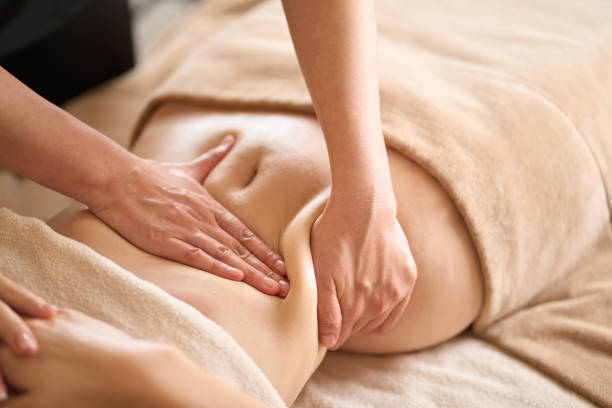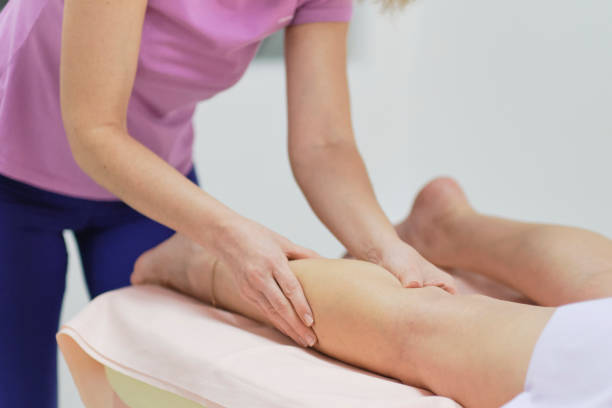Alternative Treatments, Homeopathy
When Can You Get A Lymphatic Drainage Massage
Lymphatic drainage massage, a therapeutic practice that stimulates the lymphatic system, is becoming increasingly popular due to its potential health advantages, which include reduced swelling, cleansing, and enhanced immune function. However, choosing the best time to receive this specialized massage is critical for maximizing its effects. Individual health concerns, recuperation from surgery or accident, and overall wellness goals all influence when to schedule a lymphatic drainage massage.
In this article, we’ll look at the several settings and factors that can help you get the most out of this delicate yet powerful style of bodywork. Whether you want to relieve edema, improve post-surgical recovery, or just support your body’s natural detoxification processes, identifying the best time for lymphatic drainage massage is critical to reaping the maximum benefits.

Understanding Lymphatic Drainage Massage
Lymphatic drainage massage is a therapeutic practice that stimulates the lymphatic system, which removes waste and toxins from the body. It is a gentle, non-invasive treatment that can enhance circulation, reduce edema, and stimulate the immune system.
Basics of the Lymphatic System
The lymphatic system is a network of veins and organs that helps the body maintain fluid balance and combat infections. It consists of lymph, lymph nodes, arteries, and organs like the spleen and thymus gland. Lymph is a transparent fluid that transports waste and toxins away from tissues and to lymph nodes, where they can be cleansed and cleared from the body.
Benefits of Lymphatic Drainage
Lymphatic drainage massage can bring several health benefits to the body. It can reduce edema and inflammation, enhance circulation, and strengthen the immune system. The technique uses soft, rhythmic strokes to stimulate the lymphatic system and promote the movement of lymph fluid throughout the body.
Lymphatic drainage massage has several distinct benefits, including:
- Reduces edema in the arms and legs.
- Managing lymphedema symptoms
- Improving the immune system
- Relieving symptoms of fibromyalgia and chronic fatigue syndrome
- Improving digestion and decreasing bloating
- Reducing the appearance of cellulite
Overall, this form of massage is a safe and effective therapy that offers several health benefits. Whether you want to minimize swelling or strengthen your immune system

When Is the Right Time for a Lymphatic Drainage Massage?
Lymphatic drainage massage is a method that can provide several advantages to the body. It can assist to reduce edema, increase circulation, and promote relaxation. It is crucial to understand when it is acceptable to receive a lymphatic drainage massage.
Post-Surgery and Injury Recovery
If you have recently had surgery or are healing from an injury, a lymphatic drainage massage may be beneficial to you. This form of massage can help reduce swelling and inflammation, which is especially useful following surgery or injury. It is critical to speak with your doctor or physical therapist before receiving a massage to confirm that it is appropriate for you.
Managing Medical Conditions
Lymphatic drainage massage can also be beneficial in treating some medical disorders. It may be good for persons with lymphedema, a condition in which excess fluid accumulates in the tissues and causes swelling. It may also benefit those with fibromyalgia or rheumatoid arthritis by reducing pain and stiffness. If you have a medical issue, you should see your doctor before receiving a massage.
For General Health and Relaxation
Lymphatic drainage massage can also help patients relax and improve their general health. It can assist to decrease stress and tension, enhance circulation, and strengthen the immune system. To offer the best possible service, find a competent massage therapist who has had training.
Finally, lymphatic drainage massage can be an effective treatment for a wide range of illnesses and situations. However, you should contact with your doctor or physical therapist before receiving a massage to confirm that it is safe for you.

How Lymphatic Drainage is Performed
Lymphatic drainage massage is a gentle, non-invasive treatment designed to stimulate the lymphatic system and eliminate excess fluid and waste from the body. A qualified lymphedema therapist, massage therapist, or physical therapist can conduct this method.
Techniques and Approaches
The therapist employs a variety of techniques and approaches to provide lymphatic drainage massage. Some of the common techniques are:
- Manual Lymphatic Drainage (MLD) uses mild pressure on certain parts of the body to stimulate the lymphatic system. The massage therapist encourages lymph flow by applying mild pressure and rhythmic movements.
- Pump Technique: Uses a pump-like motion to increase lymphatic movement. The therapist utilizes their hands to generate a gentle suction and release motion that promotes lymphatic drainage.
- Deep abdominal breathing helps boost the lymphatic system. The therapist teaches the client how to breathe deeply and deliberately to promote lymphatic drainage.
Finding a Qualified Therapist
It is critical to hire a trained therapist to do lymphatic drainage massage. A certified lymphedema therapist, massage therapist, or physical therapist can safely and efficiently conduct this procedure. When searching for a therapist, consider the following:
- Choose a therapist who is certified
- Choose a practitioner with experience
- Seek references from friends, family, or healthcare providers
Overall, it is a safe and effective way to increase lymphatic flow and reduce swelling. Individuals can benefit from this gentle and non-invasive treatment by working with a competent therapist.

Precautions and Contraindications
Lymphatic drainage massage is typically deemed safe for the majority of people. However, there are several dangers and contraindications to consider before getting this form of massage.
When to Avoid Lymphatic Massage
If you have any of the following conditions, you should avoid lymphatic massage:
- Cancer: If you are presently having cancer therapy or have a history of cancer, you should see your doctor before receiving a lymphatic massage. This is because the massage may transmit cancer cells throughout the body.
- Heart condition: If you have a heart condition, you should visit your doctor before receiving a lymphatic massage. The massage may boost blood flow and place additional strain on the heart.
- Blood clots: If you have a history of blood clots or are currently using blood thinners, avoid lymphatic massage. Massage can dislodge blood clots, resulting in major health consequences.
- If you have kidney failure, you should avoid lymphatic massage. The massage can place additional strain on the kidneys, potentially causing more damage.
Consulting with Healthcare Professionals
If you have any questions about the safety of lymphatic massage, you should check with your healthcare practitioner. Your doctor can advise you on whether lymphatic massage is appropriate for your individual health needs.
Furthermore, it is critical to select a qualified massage therapist who has prior experience working with clients with medical issues. The massage therapist can collaborate with your healthcare provider to create a treatment plan that is both safe and effective for you.
Overall, lymphatic drainage massage can be a useful treatment for many people. However, before receiving this sort of massage, take measures and consult with a healthcare practitioner.
Conclusion
Finally, the best time to arrange a lymphatic drainage massage is determined by personal circumstances, health goals, and professional recommendations. Whether it’s to reduce swelling, aid in post-operative recovery, or promote overall well-being, speaking with a trained massage therapist or healthcare professional can help you choose the best time for your requirements. Understanding the components involved and listening to your body’s signals allows you to maximize the potential advantages of lymphatic drainage massage to support maximum health and vitality. Remember, the goal is to prioritize self-care and make informed decisions that are tailored to your own health journey.
Journey of self discovery


